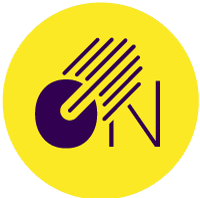Three elite performers using neurofeedback, Well, don’t freak out yet. No, this article doesn’t assume you know what neurofeedback is, so hang around for a while and read some fantastic stuff about the brain and its ability to be trained for optimal performance.
What is Neurofeedback?
In its essence, neurofeedback is a non-invasive, drug-free reward-based training program for your brain. It is a form of brain biofeedback.
What is Biofeedback?
Biofeedback is a broad category like “fruits” or “vegetables.” Biofeedback refers to using technology to gain information by monitoring blood pressure, muscle tension, skin temperature, brain waves, heart rate, and other normal physiological functions of your body.
This information helps you gain insight and control over the automatic and involuntary body processes through relaxation and conditioning. Now, neurofeedback is a subset of this broad category of biofeedback.
Just like how an apple belongs to the broader group of fruits, neurofeedback, also known as brainwave biofeedback, is a type of biofeedback for the brain. To grasp the concept of neurofeedback, you must understand a bit about the brain and brainwaves.
The Brain
The brain is a muscle and just like every other muscle in your body if you don’t use it or exercise it, it will weaken or atrophy. The opposite is also true about the brain. Just like every other muscle in your body it can be strengthened and trained for optimal performance.
The brain controls everything in our body physically and mentally. A healthy brain has optimal speed. The brain is electrical and the speed of the electrical energy flowing through the brain is known as processing speed or brainwaves.
Brainwaves
Brainwaves provide a great deal of information on how we are feeling and functioning. Brainwaves breakdown energy by speed and depending on your brain’s
speed we can identify states of distractibility, focus, relaxation, stress, underlying moods, and overall brain function. Neurofeedback involves providing insight on your brain’s activity and comparing what your brain does to what you would want it to do. READ ABOUT NEUROFEEDBACK HERE
Applications of Neurofeedback
Research shows that the base cause for several disorders is a specific brain function dysregulation. If the brain is not able to regulate itself properly a host of symptoms can arise, anxiety, trouble sleeping, difficulty with focus and attention and more. The objective of a neurofeedback training session revolves around training the brain towards optimal function allowing individuals to self-regulate.
Research has shown that after a string of neurofeedback sessions, the brain tends to adopt the improved function and the symptoms of disorders diminish. Neurofeedback is helpful with these conditions:
- Attention deficit issues like ADD/ADHD
- Migraine
- Sleep disorders
- Depression
- Anxiety
Interestingly, you can also use neurofeedback to enhance mental performance and attain peak performance. Since brain activity is the major contributor to performance, understanding it and training it can help attain optimum results.
What Happens in a Neurofeedback Session?
Analysis and Planning
With the help of sensors fitted on the scalp, neuro therapists can monitor and measure your brain activity (by analyzing the brain waves). Brain analysis software like qEEG brain mapping helps identify the specific activities occurring in your brain.
A qEEG brain map gives a visual representation of how your brain is functioning and gives you the ability to visually see your unique patterns of mental strengths and weaknesses categorized into executive processing, memory processing, visual, verbal processing and more.
Then, the practitioners customize a training program to condition your brain to access a more efficient and optimal state.
The neurofeedback session
Reward => Feedback
Once your brain approaches an optimal state, you get rewarded by a computer screen displaying a positive response. The reward could be a movie or a video game or a tune. The displayed objects alert you instantly when your brain does/doesn’t move toward a more efficient state.
If the movie plays, your brain’s headed towards the desired state. However, if the movie stops, it means that your brains headed down the wrong freeway.
Neurofeedback is symbolic of hitting the gym to train your muscles. In this case, by getting feedback on when your brain is in an optimal state, you are teaching your brain new ways to perform and heighten performance.
Very similar to how consistency helps with physical exercise, a phenomenon called neuroplasticity enables the brain to attain mental fitness and scale peak performance.
Claims of Three Elite Performers Using Neurofeedback
You are probably skeptical of this whole neurofeedback idea, and that’s ok. Here are a few valid claims of 3 ultra-successful experts in their fields:
1.Tony Robbins
Chances are you know who Tony Robbins is already. If you don’t, here’s a summary. Tony Robbins is a self-help king who has trained athletes, politicians, and organizations to attain exponential success.
Interesting fact: Tony has also trained shooters in the US army! His books like “Unlimited Power” and “Awake the Giant Within” are best sellers.
Tony Robbins, a satisfied customer of the Biocybernaut Institute, is reportedly enjoying the benefits of neurofeedback. James Hardt, a renowned psychologist, has been researching the likes of neurofeedback since the 1980s.
His company, the Biocybernaut Institute, claims that the week retreat package they offer imparts the benefits and wellness of 20 years of meditation.
That’s like a quick shortcut to peak performance and mental fitness. It costs $15,000. However, if you can tweak your mental performance, the possibilities are infinite.
You can achieve so much more in life, and you will recover your “investment” back in no time at all. Tony Robbins must have thought the same when he enrolled for this program.
Since Tony is an expert at self-help, he must have considered all the pros and cons before agreeing to place foreign objects on his scalp. Fast forward into the present, and Tony Robbins’ testimonial reveals that his multitasking abilities have skyrocketed.
He can visualize two different tasks with most accuracy. Drafting an email and conversing with a person are both possible without any compromise in quality. Wow, imagine how much you could learn or do if you can spend the same amount of time accomplishing several tasks.
2. Kerri Walsh-Jennings
The dynamic American volleyball duo of Kerri Walsh-Jennings and Misty May-Treanor dominated the sport for over a decade.
They clinched the gold medals at both the 2004 and the 2008 Summer Olympics. However, the pair entered the 2012 Olympics in London as a third-seeded team. It was quite usual, especially after having excelled at the previous two Olympics outings.
Ms. Jennings felt her joints become loose and muscles stretched out as a result of her pregnancies. Her sleep took a toll and also did her energy levels. Looking to change things, Kerri signed up for a neurofeedback program in LA-based Neurotopia.
Her testimonial revealed that neurofeedback helped her stay calm in pressure moments. Moreover, the data generated from her brain waves helped teach herself how to suppress the brain waves that give rise to low performance.
Additionally, she learned to increase the brain waves associated with peak brain performance. Deservingly, the duo went on to win the London Olympics as well, for a third consecutive time.
3. Chris Kaman
NBA Clippers’ star Chris Kaman reportedly got misdiagnosed with ADHD (Attention-Deficit Hyperactivity Disorder). Kaman partnered up with Royer and Neurofeedback technology. During his sessions, he found ways to regulate his brain waves and stay calm during crunch moments in his game.
As a result, Kaman played with a cool head and made better decisions during his games. He averaged at a whopping 17.9 points per game in the 2008 NBA season. Kaman attributed his new found form to neurofeedback training and the underlying peak performance attaining benefits.
Dr. Royer from the neurofeedback company figured out that the ADHD was a false call. Interestingly, Kaman’s brain was found to be working too fast, as opposed to the too slow claims his ADHD diagnosis revealed.
Summing it up:
Neurofeedback is being used all over the world by Olympic athletes, colleges and universities and high-profile celebrities who express the impact it’s had on their careers and performance.
If you’re looking for a mental edge over your competitors and want to attain peak performance and an excellent level of mental performance, continue to research more on neurofeedback training.







